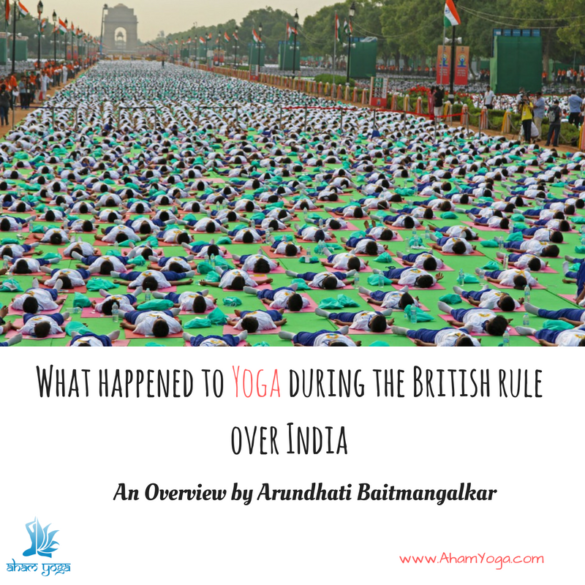814

The British empire ruled over India for nearly 200 years. During this period, India underwent immense change in many aspects. Specifically for yoga, there is little record kept during this time. The following observations made are my own based on what I have heard from my teachers and gathered from different sources.
The British came to India amongst many other countries to benefit from growing trade relations. India was known for its spices, cotton, gold, precious gems, silk, etc. Long story short, the British ended up getting greedy for more power and control in this ancient land and began to conquer portions of it. At that time, India was ruled by independent kingdoms – each with its own set of rules, customs, and lifestyles. Those who know even a little bit about India will understand this, as India is a very diverse land. Every nook and corner filled with different languages, religions, traditions, clothing, foods, etc. Unlike the British, most Maharajas (Kings) in India did not have access to guns or the latest war technology, making them more vulnerable and easier to conquer.
During this period, India gained and lost tremendously. But for the sake of staying on topic, we are focusing exclusively on the journey of yoga during India’s freedom struggle. Unfortunately, we do not have official records of what happened to yoga during this time. But drawing from the stories that have been told to me, and what research is available, I have come up with the following conclusions:
- The Britishers looked at Indians mostly as uncivilized people, who needed to be taught how to live, work, behave, etc..For example, the act of eating with one’s hand was considered to be ill-mannered and the right way was to eat with utensils. This happened mainly due to the Britishers not understanding the Indian ways of living, language barriers and their inherent need to conquer and rule.
- The many wars between the two across the years plundered a lot of wealth in terms of knowledge. The Indian education system became disrupted in many parts. English was introduced in schools, and British curriculum took over. This started destroying the ancient guru shishya parampara that had been working flawlessly for centuries.
- Yoga shalas (schools) were shut down and Physical Training (PT) was introduced in schools and colleges. This was a significant shift, as this was the only place where the younger generation had access to yoga. Now would be a good time to remind ourselves that Yoga was not born in yoga studios as it commonly found today. Yoga has been available in yoga studios only post independence. This trend largely started in the western world. And it is only in the past 5 to 7 years that you see yoga studios in India until then it was largely yoga schools. A small but important distinction. Schools imply that there is a greater focus than just the body and postures. Disciple not just practice
- Many educated men, sadhus or aesthetics were deemed as madmen and were chased away from society. Yoga slowly started developing the image of being some sort of ‘voodoo’ or strange, cult like practices. It did not have the ‘cool’ image it has today in the western world. Had yoga looked like what it does today in the western world, perhaps the Britishers would have taken to it a lot faster.
- The science of yoga and ayurveda was replaced with english doctors and medicine

Yoga during India’s freedom struggle
And as a result of the on-going struggle, yoga slowly started disappearing from mainstream India. But thanks to the efforts of a few Maharaja Wodeyar from Mysuru, Swami Vivekananda, Yogananda, Sri. T. Krishnamacharya and a few prominent others, yoga was advocated as something that promoted good mental and physical health, and continued to make its way in the background of the struggle. It wasn’t until post independence that India began re-building herself, that Yoga started to make a very slow comeback – with only a few out of millions working towards its growth and continuation.
Today, however, the yoga scene is completely different in India. In the past 5 years, it has made a comeback of sorts into mainstream India and is now much more readily available. Prime Minister, Narendra Modi, made strong efforts with the United Nations General Assembly (UNGA) in 2014 to commission International Yoga Day as a recognized holiday across the globe. As of 2015, it is celebrated annually on June 21st – an epic step to India embracing it’s gift to the world.

